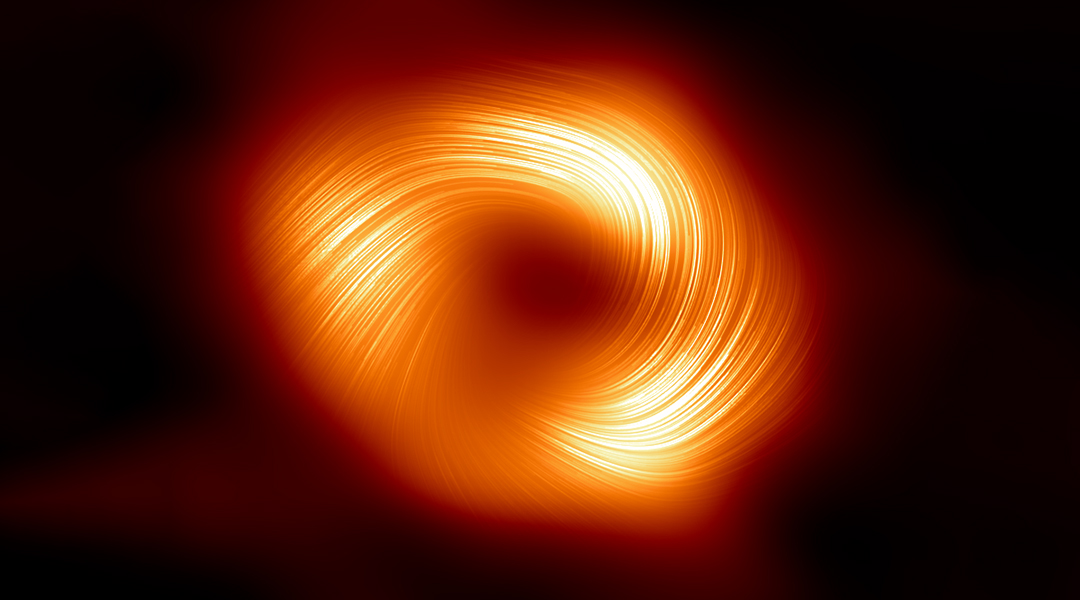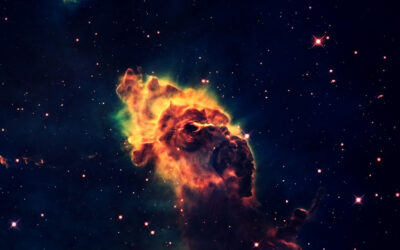Researchers have examined the historical images of supermassive black holes — Sagittarius A* (Sgr A*) at the heart of the Milky Way and the black hole at the center of the galaxy Messier 87 (M87) — to rule out an alternative to our current best theory of gravity.
In doing so, the team behind this research also help to confirm the existence of dark energy and dark matter, the two most mysterious and difficult-to-explain aspects of the universe.
Despite being arguably the most ubiquitous “force” experienced by humanity, gravity hasn’t necessarily been easy to explain. Newton’s theory of gravity was a good early attempt and still works perfectly well for relatively small-scale calculations, but it starts to fail when considering massive objects, even struggling to explain the wobbly orbit of Mercury.
In 1915, Einstein put forward the theory of general relativity, suggesting that gravity is not a force in the traditional sense but instead arises from the curvature of space and time, united as a four-dimensional entity called “spacetime,” caused by the presence of mass. The more mass an object has, the greater the curvature of spacetime and, thus, the greater the gravitational influence of that object.
One of the most remarkable aspects of general relativity is the number of concepts that it predicted, including black holes and gravitational waves, that later came to be evidentially verified. General relativity is one of the most tested theories in science, and it has survived every experimental challenge thrown at it. It has thus supplanted Newton’s theory of gravity.
General relativity isn’t perfect, however. One of the major problems with Einstein’s magnum opus theory is the fact cosmological theories that tell the story of the universe based upon it can’t account for the so-called “dark universe.” That is dark energy, the mysterious force that drives the acceleration of the universe’s expansion, and dark matter, the strange “stuff” that out-populates ordinary matter by five to one but remains effectively invisible.
The dark universe problem for Einstein
Dark energy accounts for an estimated 70% of the universe’s matter/energy budget, while dark matter accounts for a further 25% of that budget. This means that everything we see in the universe around us, all the stars, planets, moons, asteroids, animals, etc… account for just 5% of the contents of the universe. No wonder most scientists are desperate to discover what dark energy and dark matter are.
Why the caveat most?
That’s because other scientists propose that dark matter and dark energy don’t exist. Instead, they suggest that the effects we attribute to them are a consequence of the fact that general relativity isn’t the “right recipe” for gravity. These researchers posit theories of “modified gravity” that do away with the need for the dark universe to exist. Some modify Newton’s theory of gravity; others attempt to extend on general relativity.
One of the most credible modified gravity theories is mimetic gravity, suggested in 2013 by researchers Slava Mukhanov and Ali Chamseddine. Mimetic gravity extends general relativity, leading to the appearance of a dust-like perfect fluid that can mimic cold dark matter at a cosmological level and can explain the late-time acceleration of the cosmic expansion attributed to dark energy.
To surpass and supplant general relativity, one thing any modified gravity theory must do is also the phenomenon in the universe that conforms to Einstein’s 1915 theory. That is where the images of black holes come in.
In April 2019, when scientists from the Event Horizon Telescope (EHT) revealed the first-ever image of a black hole to the public, the supermassive black hole M87*, they expressed how surprised they were that it almost exactly conformed to the appearance of a black hole and its surroundings predicted by general relativity. This was compounded in May 2022, when the first image of “our black hole” Sgr A* also tightly conformed to expectations and closely resembled M87* despite the fact that the latter is much more massive than the Milky Way’s supermassive black hole.
Thus, it is only natural to put theories of modified gravity up against observations of the supermassive black holes M87* and Sgr A* collected by the EHT, a global network of instruments that effectively creates a single Earth-sized telescope. That is exactly what the authors of a new paper set out to do.
“In a sense, the mere fact that we can see these images rules out mimetic gravity!” said University of Trento researcher Sunny Vagnozzi. “In short, our findings completely rule out baseline mimetic gravity, which was previously one of the least unlikely modified gravity-based models for dark matter and dark energy.
“In some sense, it empirically gives even more support to the fact that dark matter and dark energy may be ‘real’ and not the effect of modifications of gravity.”
The anatomy of black holes: General relativity vs. mimetic gravity
To understand why the team’s research and the EHT images are bad news for supporters of mimetic gravity, it is necessary to delve into the anatomy of black holes a little bit.
All black holes are considered to be composed of a central singularity, an inestimably small region of space with infinite mass where the laws of physics fail, and an outer boundary called an “event horizon.” The event horizon is the point at which the gravitational influence of the black hole becomes so great that not even light is fast enough to escape. Thus, anything that passes the event horizon of a black hole is on a one-way trip to the central singularity.
Around the event horizon is a region of space that is constantly dragged along with the rotational of the black hole due to its immense gravity. It is impossible for matter to sit still in this region, called the “ergosphere.” Further out is matter whipping around the black hole at near-light speeds, causing it to glow. This matter appears as a striking golden ring in the images of M87* and Sgr A*, with the shadow of the black holes appearing in the center of these rings.
That is, if general relativity is the correct recipe for gravity and if a solution to its equations called the Schwartzchild solution accurately describes the anatomy of black holes.
Mimetic gravity has two different ideas about black holes. Vagnozzi explained that one of the two natural classes of objects in mimetic gravity is a naked singularity. This is a central singularity that is not bounded by a light-trapping event horizon. No event horizon would have meant no EHT image.
The second possible object predicted in mimetic gravity is a so-called “mimetic black hole.” If the EHT had imaged one of these objects when it snapped M87* or Sgr A*, what researchers would seen is an image with a much smaller dark region at its heart than the dark region that was seen in these black hole images.
“We demonstrated that the naked singularity does not cast a shadow. It should not lead to an image in EHT observations,” Vagnozzi said. “To use an everyday life analogy, say EHT images are actually the reflection of ourselves we see in the mirror. If I were a mimetic naked singularity, I would look in the mirror and see no reflection. If I were a mimetic black hole, my image in the mirror would be much smaller than it actually is.
“This analogy is stretching it a lot, but it should give an idea of what is happening.”
Vagnozzi explained that although the interpretation of EHT data to create the images of M87* and Sgr A* is a complex process with some margin of error, this possible uncertainty simply isn’t significant enough for the team’s conclusion to be incorrect.
The researcher stresses that the research conducted by the team rules out only a “baseline” version of mimetic gravity, adding that more complex mimetic gravity theories with more adjustments to general relativity could still be possible.
“This is absolutely a demonstration of the importance of the EHT and its observations. It demonstrates that EHT has the potential to rule out candidate theories of dark matter and dark energy, which were previously completely viable,” Vagnozzi said.
“The takeaway message is very important: any theory that claims to explain dark matter and dark energy needs not only be consistent with cosmological observations but also with observations of black holes, and this provides a highly non-trivial test of many such models, which may be inconsistent with EHT images.
“We believe this idea deserves to be explored in much more detail.”
Reference: Mohsen Khodadi, Sunny Vagnozzi, and Javad T. Firouzjaee Event Horizon Telescope observations exclude compact objects in baseline mimetic gravity, Scientific Reports (2024). DOI: 10.1038/s41598-024-78264-y
Feature image credit: EHT Collaboration

















